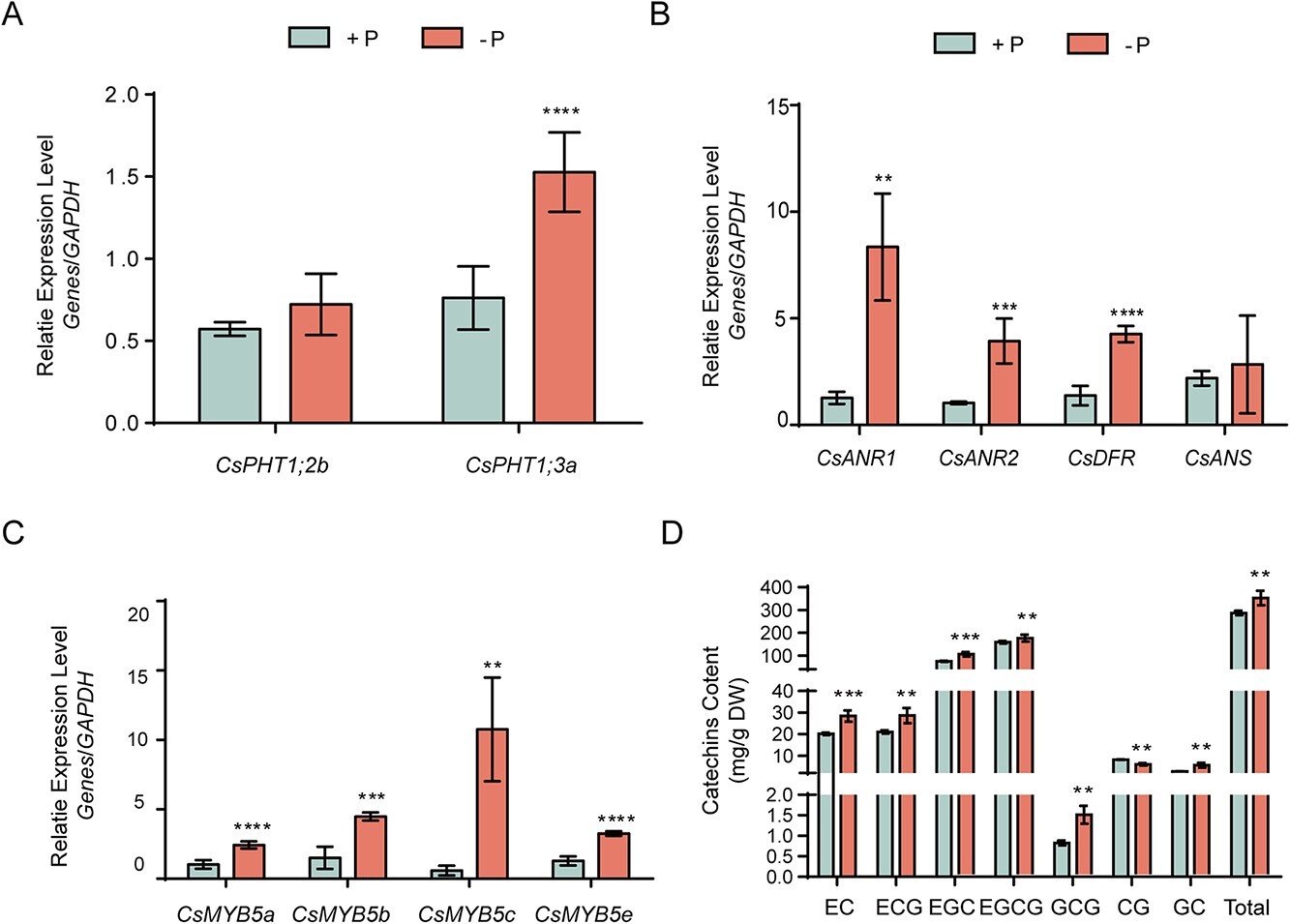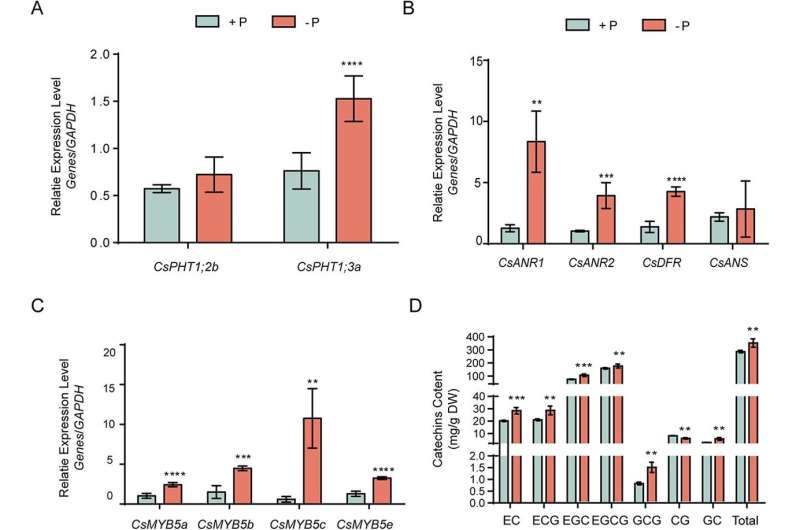

Catechins, the key active components in tea, are known for their protective effects against conditions like diabetes, cancer, and cardiovascular diseases. However, their biosynthesis is highly sensitive to environmental factors, particularly phosphate (Pi) availability, which is often scarce in the soils where tea is grown.
This deficiency can adversely affect tea quality by disrupting the accumulation of secondary metabolites. Given these challenges, there is an urgent need to understand the molecular mechanisms governing catechin production under varying nutrient conditions.
Conducted by scientists at the Zhejiang Academy of Agricultural Sciences and published in Horticulture Research, a study explores the complex interplay between phosphate signaling and jasmonate (JA) pathways in tea plants.
Researchers identified two key transcription factors, CsPHR1 and CsPHR2 (Phosphate Starvation Response, PHR), involved in phosphate signaling, and CsJAZ3 (JAZ, Jazmonate Zim Domain), a repressor in the jasmonate pathway. Together, these elements regulate catechin biosynthesis in response to nutrient levels and hormonal signals, providing new insights into the genetic control of tea quality.
The research demonstrates that phosphate deficiency activates critical genes in catechin biosynthesis through CsPHR1 and CsPHR2, boosting the expression of CsANR1 (anthocyanidin reductase, ANR) and CsMYB5c (Myeloblastosis, MYB), which are pivotal in catechin production. Additionally, CsSPX1, a phosphate pathway repressor, was found to inhibit the action of CsPHR1 and CsPHR2, fine-tuning the response to phosphate availability.
The study further reveals that CsJAZ3 interacts with CsPHR1 and CsPHR2, linking jasmonate signaling with phosphate regulation. This interaction is essential for balancing the plant’s adaptive response to nutrient stress and hormonal changes, thereby influencing catechin content and overall tea quality.
Dr. Gaojie Hong, the senior author, commented, “Our study unveils a complex regulatory network where phosphate and jasmonate pathways intersect to control catechin biosynthesis in tea plants. These insights not only deepen our understanding of tea metabolism but also offer potential strategies for enhancing tea quality through precise genetic and environmental management.”
The identification of the CsPHRs-CsJAZ3 regulatory module opens up significant opportunities for the tea industry. By strategically manipulating these pathways, it is possible to boost catechin levels, enhancing both the quality and health benefits of tea. These findings can inform the development of optimized cultivation practices that improve nutrient efficiency, minimize environmental stress, and elevate the economic and nutritional value of tea, making it a more sustainable crop for the future.
More information:
Linying Li et al, CsPHRs-CsJAZ3 incorporates phosphate signaling and jasmonate pathway to regulate catechin biosynthesis in Camellia sinensis, Horticulture Research (2024). DOI: 10.1093/hr/uhae178
Citation:
Exploring the interplay between phosphate signaling and jasmonate pathways in tea plants (2024, September 19)
retrieved 19 September 2024
from https://phys.org/news/2024-09-exploring-interplay-phosphate-jasmonate-pathways.html
This document is subject to copyright. Apart from any fair dealing for the purpose of private study or research, no
part may be reproduced without the written permission. The content is provided for information purposes only.